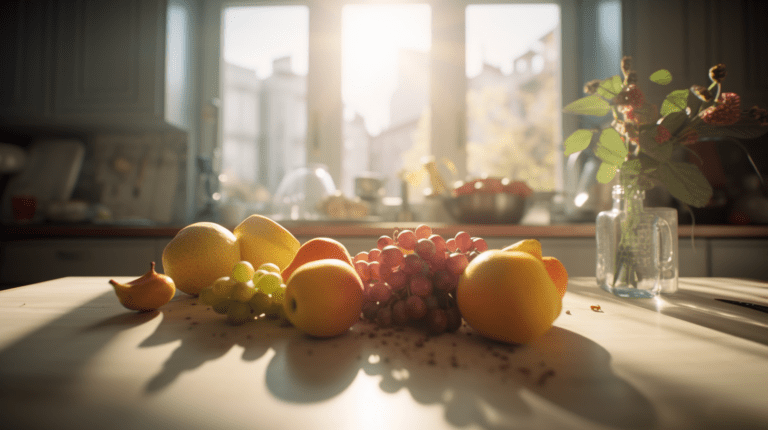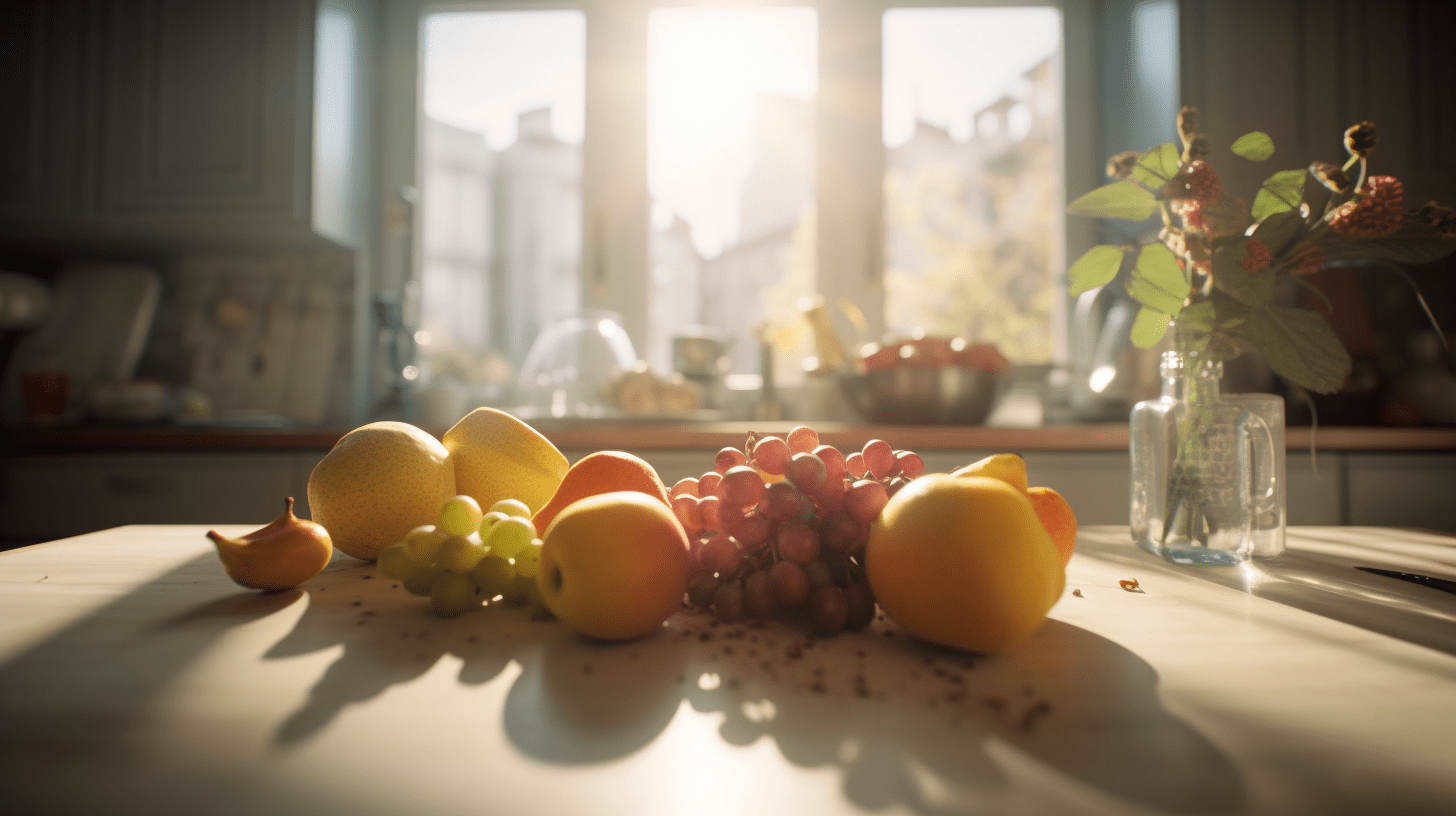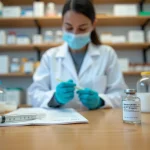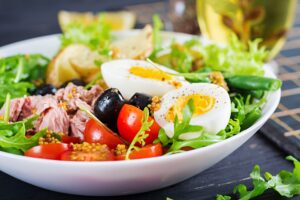Have you ever wondered what it would be like to have a meal that is perfectly tailored to your nutritional needs? Imagine a plate of food that not only satisfies your taste buds but also provides you with the exact nutrients your body requires.
Well, thanks to the incredible advancements in 3D printing technology, this futuristic concept is now becoming a reality. With the ability to create intricate and personalized food items, 3D printing is revolutionizing the way we think about nutrition and food production.
In this article, we will explore the potential of 3D printing in personalized nutrition and how it can benefit both individuals and society as a whole. From there, we will discuss the concept of personalized nutrition and its advantages, highlighting how it can improve our overall health and well-being.
Finally, we will look into the role of 3D printing in food production, exploring the challenges and limitations it faces, as well as the future implications and possibilities it holds.
Key Takeaways
- 3D printing allows for customized portion sizes, giving individuals control over the amount of food they consume.
- With personalized nutrient profiles, meals can be tailored to meet specific nutritional needs, ensuring individuals are getting the right balance of nutrients.
- Experimentation with taste and texture is possible with 3D printing, allowing for the creation of nutritious and satisfying meals that cater to individual preferences.
- 3D printing can help reduce food waste by precisely portioning meals and minimizing leftovers.
Understanding 3D Printing Technology
Imagine a world where you can create customized meals using advanced 3D printing technology, revolutionizing the way we think about food. With this incredible technology, you have the power to design and print meals that are tailored to your specific nutritional needs and taste preferences.
No longer will you have to settle for generic, one-size-fits-all meals. Instead, you can create personalized dishes that not only nourish your body but also satisfy your cravings.
3D printing technology allows you to create intricate and complex shapes and textures that were previously impossible to achieve in traditional cooking methods. You can print layers of different ingredients, building up flavors and creating unique combinations that tantalize your taste buds.
Imagine a perfectly cooked steak, with each layer of meat, fat, and seasoning printed precisely to create a mouthwatering experience. Or a dessert that combines the silky smoothness of chocolate mousse with the crunchiness of a cookie, all in a single bite. The possibilities are endless, and the only limit is your imagination.
By harnessing the power of 3D printing technology, you can not only create meals that are delicious and visually stunning but also ensure that you are getting the nutrients your body needs. You can input your dietary requirements and preferences into the 3D printer, and it will create a meal that is perfectly balanced and tailored to your needs.
Whether you follow a specific diet, have allergies, or simply want to improve your overall health, 3D printing technology can help you achieve your goals. It’s like having a personal chef who knows exactly what your body needs and creates meals that are both nutritious and enjoyable.
Personalized Nutrition and its Benefits
Indulge in a diet tailored to your unique needs and preferences, allowing you to optimize your health and well-being. Personalized nutrition takes into account your individual factors such as age, gender, weight, and activity level, as well as your specific dietary restrictions and goals.
With 3D printing technology, you can now have the power to create customized meals that are perfectly suited to your body’s needs. Imagine waking up in the morning to a breakfast that is designed specifically for you. Your 3D printer can create a nutrient-rich meal that’s packed with the vitamins and minerals your body requires. Whether you need an extra boost of protein for muscle recovery or a meal that’s low in carbs for weight management, personalized nutrition can deliver exactly what you need.
Not only does personalized nutrition allow you to optimize your health, but it also allows you to explore new flavors and cuisines. With 3D printing, you can experiment with different ingredients and textures, creating meals that are not only nutritious but also delicious.
The Role of 3D Printing in Food Production
Experience the extraordinary efficiency and innovation of 3D printing in revolutionizing food production. With this cutting-edge technology, you have the power to create personalized and nutritious meals like never before.
Imagine being able to customize every aspect of your plate, from the ingredients to the shape and texture of the food. 3D printing allows for precise control over the composition of your meals, ensuring that you are getting the perfect balance of nutrients tailored to your specific dietary needs.
Not only does 3D printing offer unparalleled customization, but it also offers incredible efficiency. Traditional food production methods often involve long and complex processes that can be time-consuming and wasteful.
With 3D printing, you can have a meal created in a matter of minutes, eliminating the need for lengthy preparation and cooking times. This means that you can spend less time in the kitchen and more time enjoying your meal.
Furthermore, 3D printing reduces food waste by only using the exact amount of ingredients needed for each meal. This not only saves money but also helps to reduce the environmental impact of food production.
Challenges and Limitations of 3D Printed Food
Despite the advancements in 3D printing technology, there are still various challenges and limitations associated with the production of 3D-printed food. While the concept of creating personalized, nutritious meals using a 3D printer may seem exciting, there are a few obstacles that need to be overcome to make it a reality.
One of the main challenges is the limited range of ingredients that can be used in 3D printed food. Traditional food production allows for a wide variety of ingredients to be combined and cooked in different ways, resulting in a multitude of flavors and textures. However, 3D printing food requires the ingredients to be in a pureed or powdered form, which limits the options available. This can make it difficult to replicate the complexity and diversity of traditional meals.
Another limitation is the texture of 3D-printed food. Currently, most 3D-printed food has a uniform, smooth texture, which may not be appealing to everyone. The process of layering ingredients can result in a lack of variation in texture, making the food less enjoyable to eat. Additionally, the printing process can sometimes lead to a loss of moisture, resulting in dry and unappetizing food.
To further illustrate the challenges and limitations of 3D printed food, take a look at the table below:
| Challenge | Limitation |
|---|---|
| Limited range of ingredients | The ingredients for 3D printed food need to be in a pureed or powdered form, which limits the variety available |
| Uniform texture | The layering process can result in a lack of variation in texture, making the food less enjoyable to eat |
| Loss of moisture | The printing process can sometimes lead to dry and unappetizing food |
| Lack of flavor complexity | The limited range of ingredients and cooking methods can result in a lack of depth in flavor |
| Cost | The technology and materials required for 3D printing food can be expensive, making it inaccessible to many |
While these challenges and limitations may seem discouraging, they are not insurmountable. Researchers and food scientists are constantly working to improve the technology and address these issues. With continued advancements, 3D printed food has the potential to revolutionize personalized nutrition, allowing for customized meals that cater to individual dietary needs and preferences.
How Can 3D Printing Technology Be Utilized for Sustainable and Personalized Nutrition?
3D printing technology is revolutionizing the evolution of sustainable dieting by allowing for customized, nutrient-dense food products to be created. This technology can be utilized to produce personalized nutrition options that cater to individual dietary needs, promoting sustainable and healthy eating habits.
Future Implications and Possibilities
With the future implications and possibilities of 3D printing in personalized nutrition, you can now have tailor-made meals that cater to your specific dietary needs. Imagine the convenience and satisfaction of having a meal that isn’t only delicious but also perfectly balanced to provide you with all the nutrients you need.
Here are a few exciting possibilities that 3D printing in personalized nutrition can offer:
- Customized portion sizes: With 3D printing, you can easily control the portion size of your meals, ensuring that you’re eating the right amount for your body. This can be especially helpful for individuals who’re trying to manage their weight or have specific dietary restrictions.
- Personalized nutrient profiles: 3D printing allows for precise control over the ingredients used in a meal. This means that you can have a meal that’s specifically tailored to meet your unique nutritional needs. Whether you need more protein, fewer carbohydrates, or a specific combination of nutrients, 3D printing can make it happen.
- Enhanced taste and texture: One of the challenges of personalized nutrition is finding ways to make healthy meals taste delicious. With 3D printing, chefs and food scientists can experiment with different textures and flavor combinations, creating meals that’re both nutritious and satisfying to eat.
- Reduced food waste: 3D printing can help reduce food waste by allowing for more efficient use of ingredients. With traditional cooking methods, there can often be leftovers that go to waste. However, with 3D printing, meals can be precisely portioned, minimizing the amount of food that goes uneaten.
The future of personalized nutrition is bright, thanks to the possibilities offered by 3D printing. With this technology, you can enjoy meals that not only meet your dietary needs but also taste amazing.
Frequently Asked Questions
How does 3D printing technology work in the context of personalized nutrition?
3D printing technology in personalized nutrition works by using computer-aided design (CAD) software to create a virtual model of the desired food item. This model is then sent to the 3D printer, which uses various materials to build the food layer by layer.
What are the specific benefits of personalized nutrition for individuals?
Discover the incredible benefits of personalized nutrition just for you. From improved digestion and energy levels to enhanced mental clarity, this tailored approach ensures you receive the nutrients your body craves.
How does 3D printing technology contribute to the overall food production process?
3D printing technology contributes to the overall food production process by allowing for personalized nutrition. It enables you to create customized meals based on your specific dietary needs and preferences, ensuring that you are served with the perfect plate every time.
What are the main challenges and limitations in the field of 3D printed food?
The main challenges and limitations in the field of 3D printed food include the need for suitable materials, limited taste and texture options, high costs, and regulatory hurdles. But don’t worry, researchers are working hard to overcome these obstacles and bring personalized nutrition to your plate!
What are some potential future implications and possibilities of 3D printing in personalized nutrition?
Imagine a future where your meals are tailored to your unique nutritional needs, created with precision by a 3D printer. From personalized vitamins to perfectly balanced meals, the possibilities of 3D printing in personalized nutrition are endless.

















